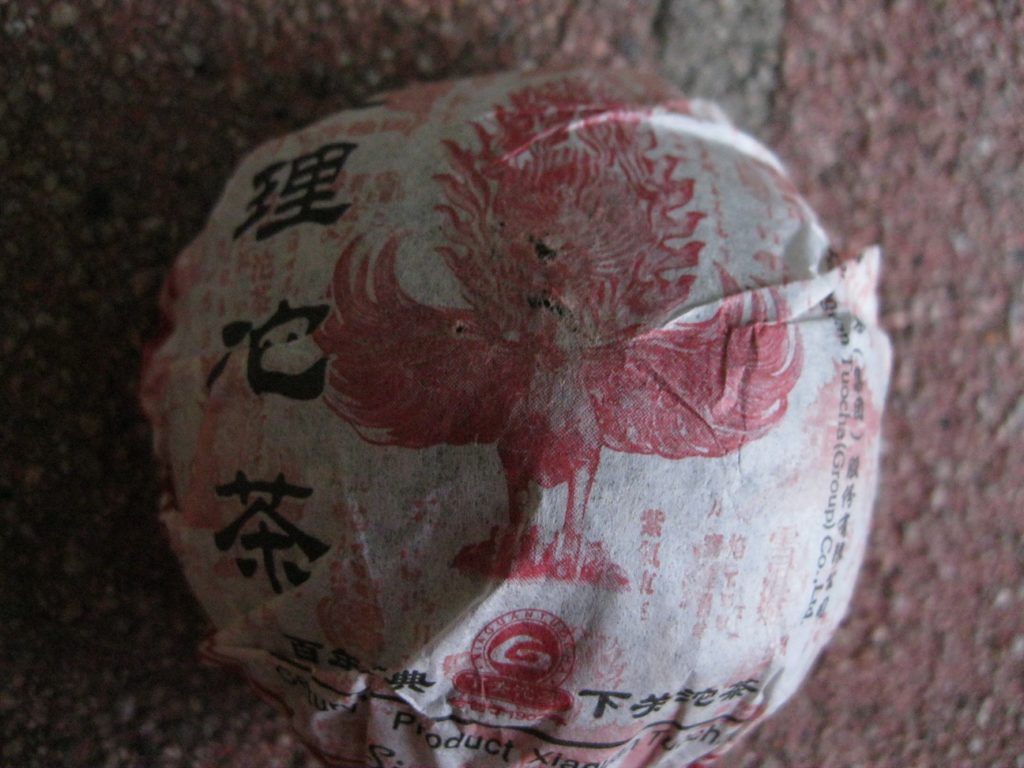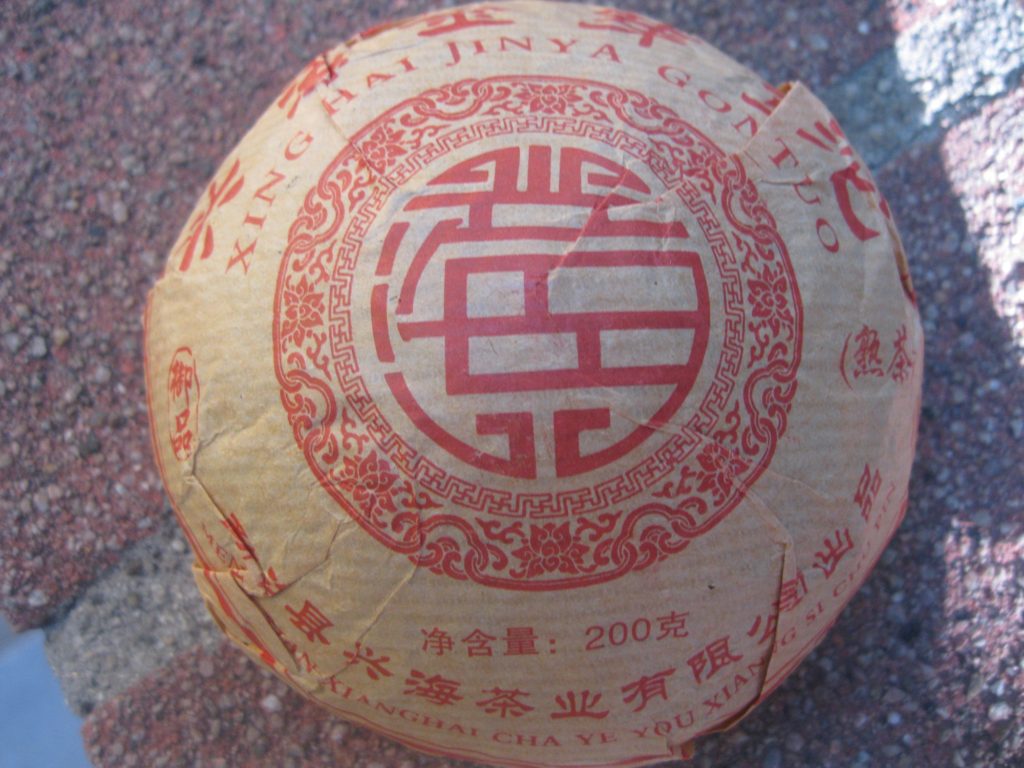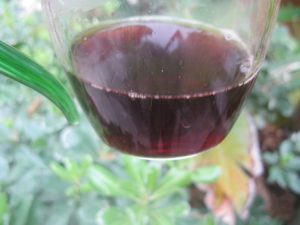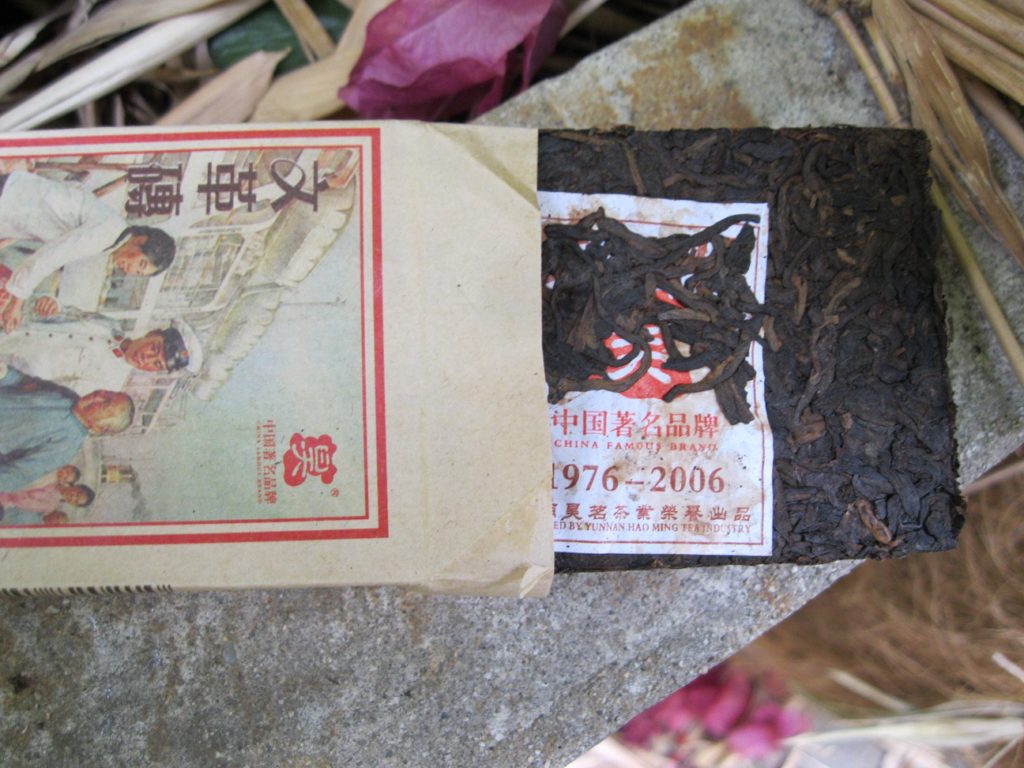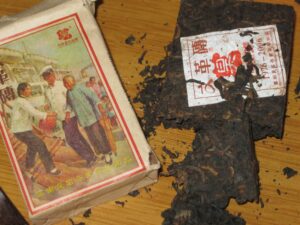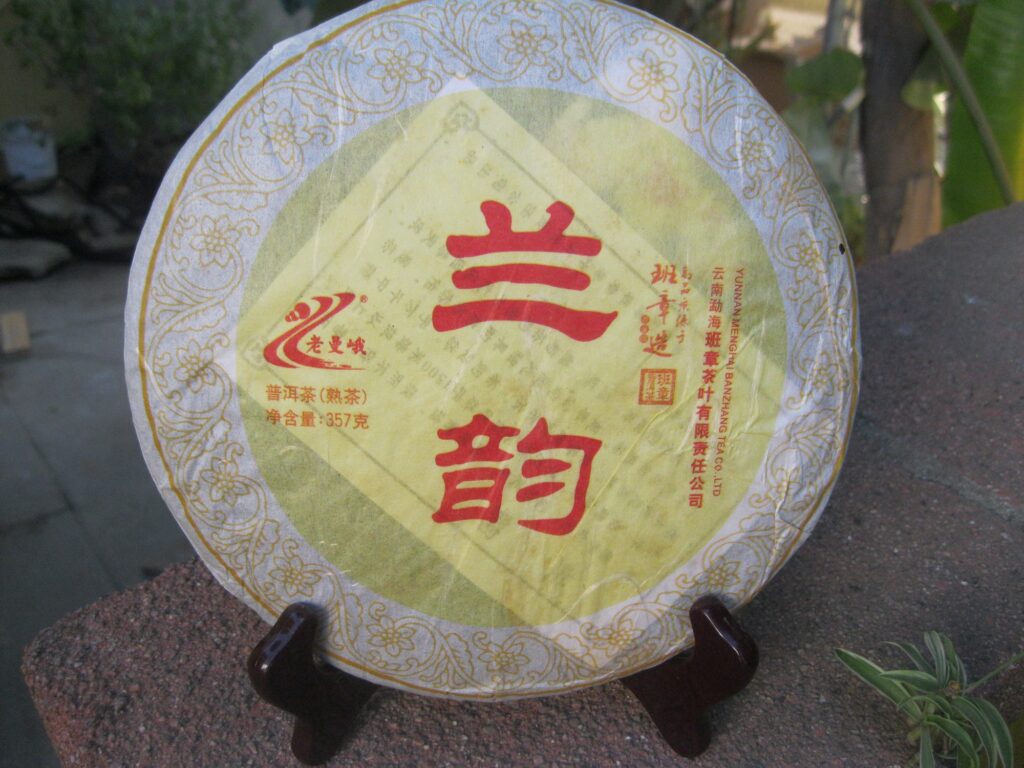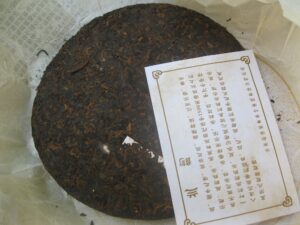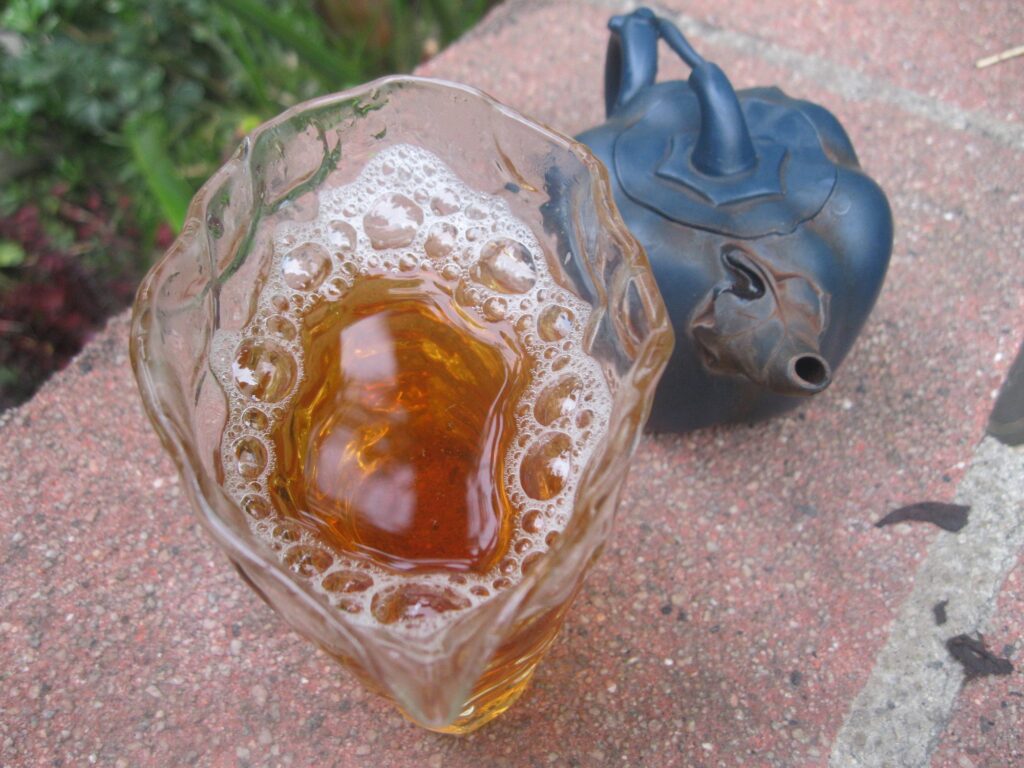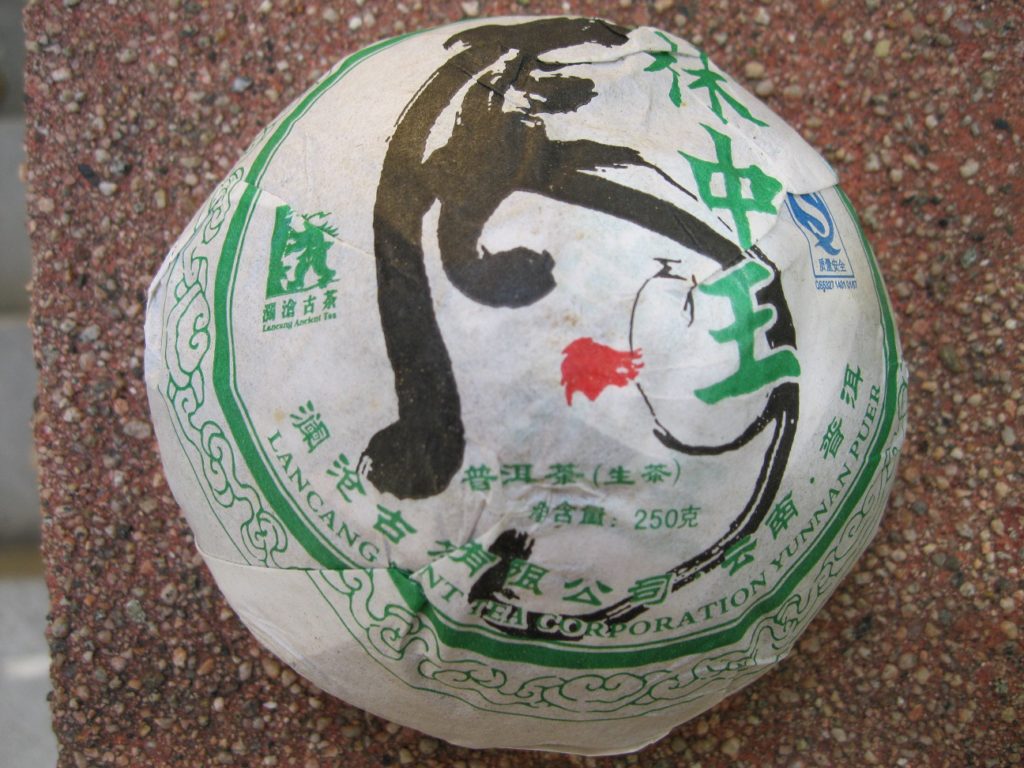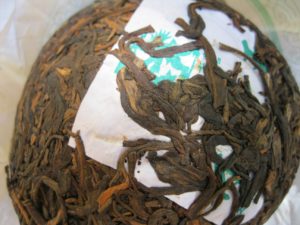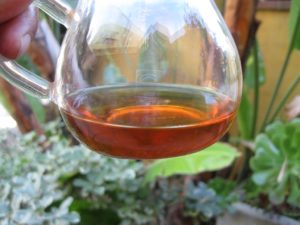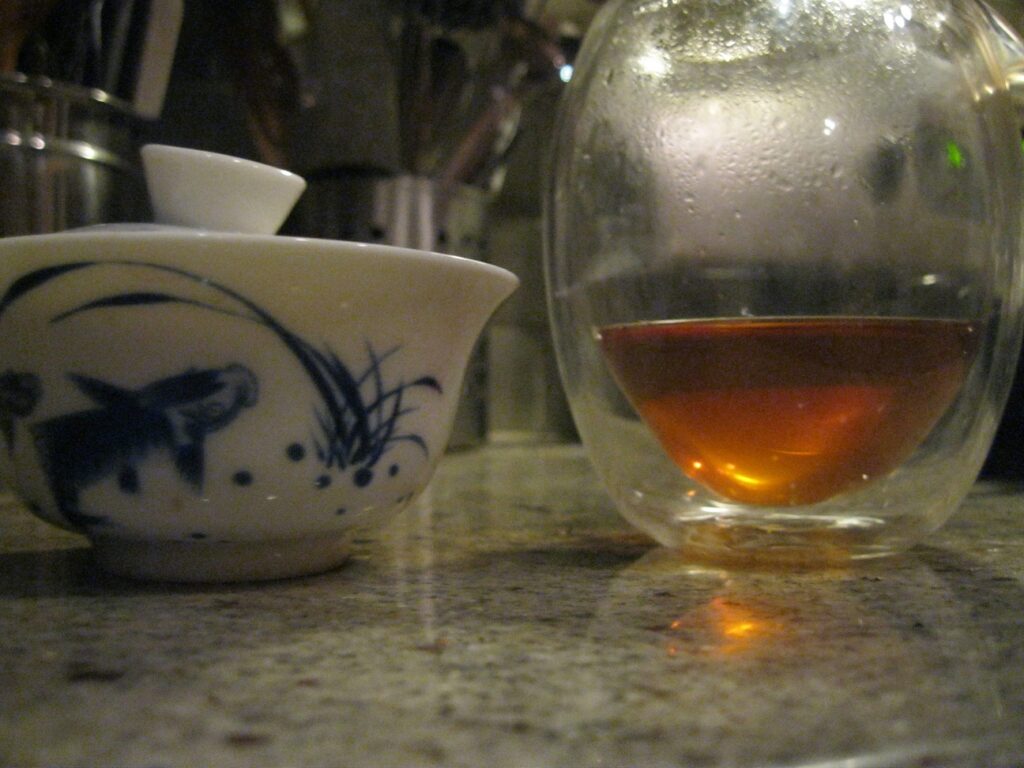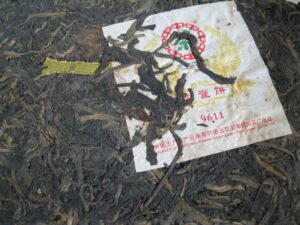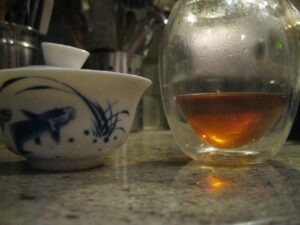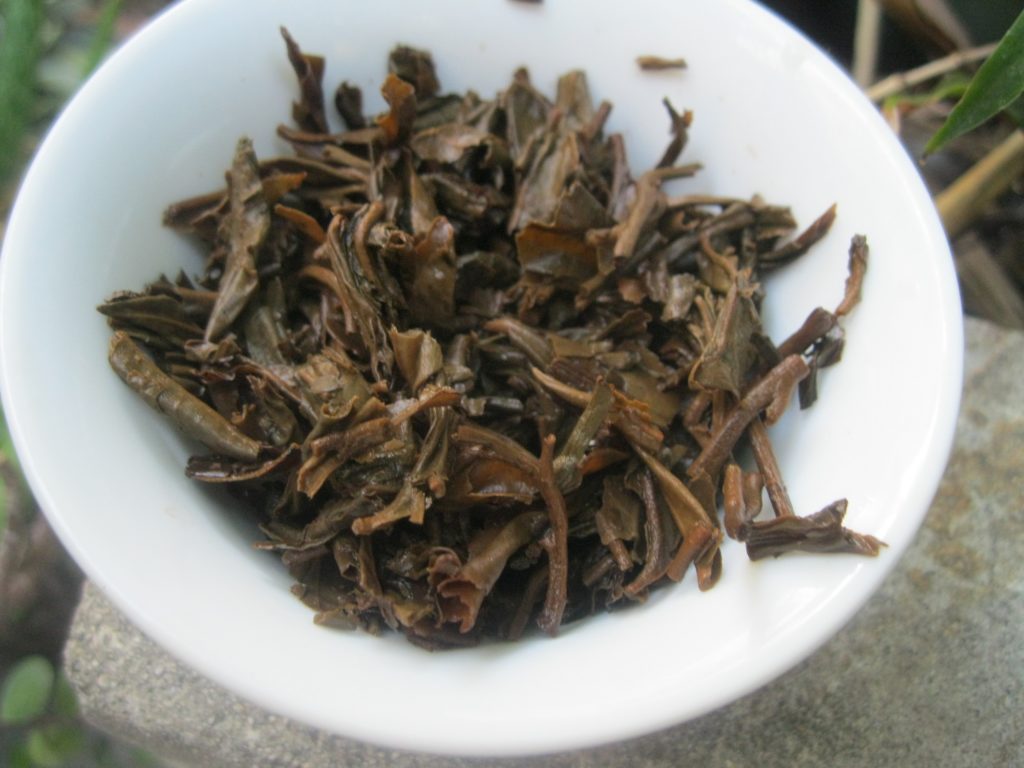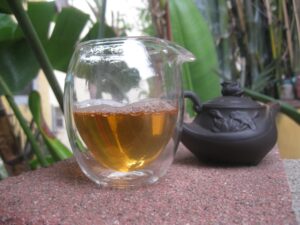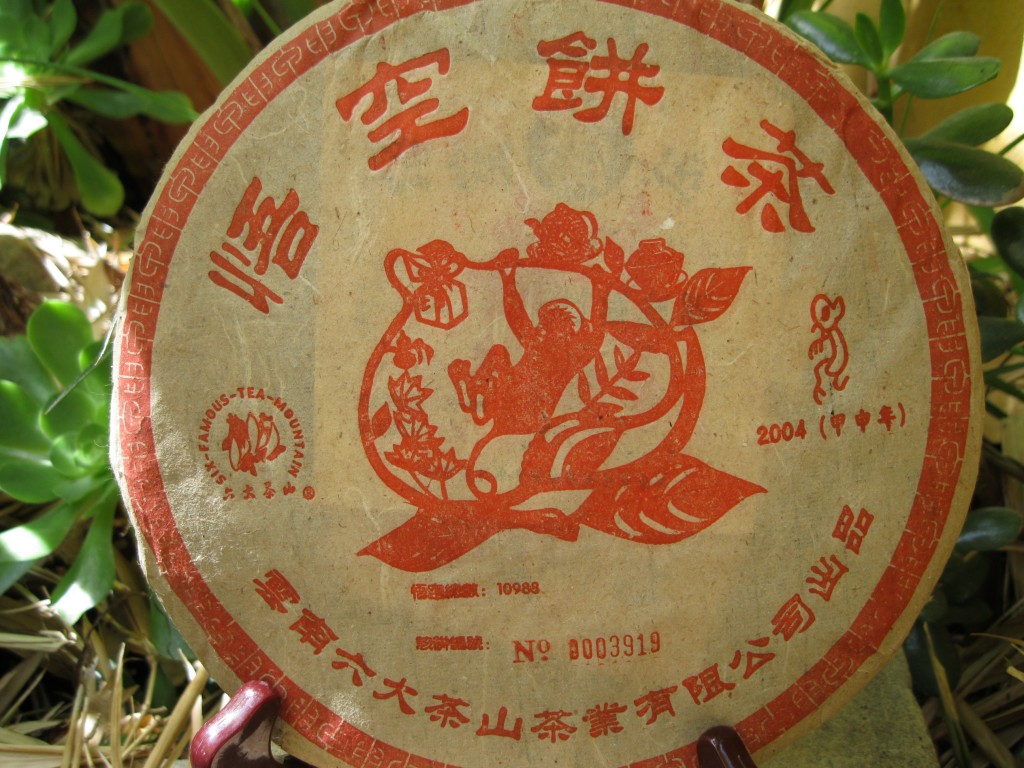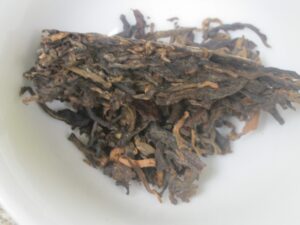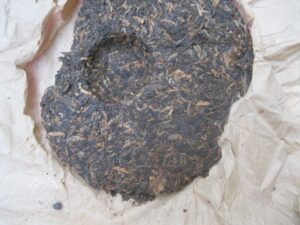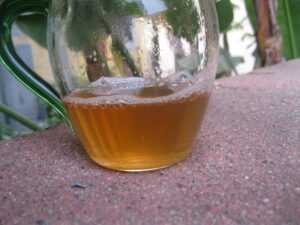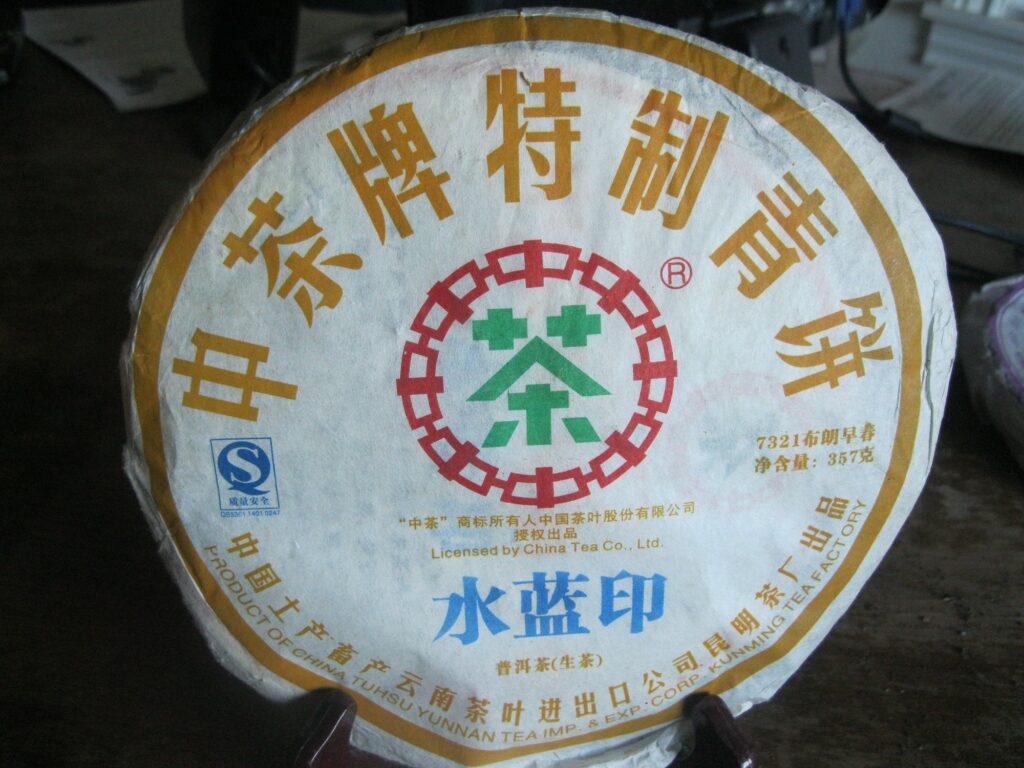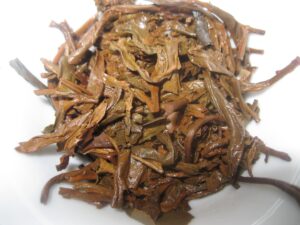Dali Tuo’s Fade into Forever Love
The Puerh Junky has been on a ride with the ’08 Dali Tuo for a number of years now. Yesterday’s weather was quite nippy, so I thought of something from the tobacco class to warm me up. I first reached for the Fruit Monster but my leaf amount was too little, feeling left unsatisfied. I’m going to leaf up on that today and issue a report. My next choice was the Dali Tuo.
The first few infusions were what I had expected but deeper in, a taste I hadn’t noticed before made itself known: tutti-fruti— all Rudi.
So a few weeks ago I tried a sample of XG’s Forever Love, a production comprised of ’03 material and pressed in ’13 if I’m not mistaken. The similarity between the two is striking. This particular fruity note is is only evident in productions that have some years under their belt. As stated, the numerous years of tasting the Dali Tuo, no fruitiness was ever evident. It was sweet, rich, and warming but never remotely fruity. The ’06 production under the same name but different box and size (150g) still bears zero marks of fruitiness. There’s just the solid tobacco grit and ash with peaty minerals laced with sweetness, maybe a little petrol, ya know Xia Guan.
Exactly how many infusions one must dig into Forever Love to get to the sweet I cannot recall but a fellow sampler seemed to note a progression with it that his Puerh Junkiness has discovered with the Dali Tuo.
The real notable is that it doesn’t bottom out. The ash infused fruit spiked with stevia goes on and on. Once you get to that stage it stays to the very end. The color and clarity are superb if not deceiving, as it is hard to imagine hue and clarity could pack so much flavour.
“A bobbabbalubao, a-bob bam…”

